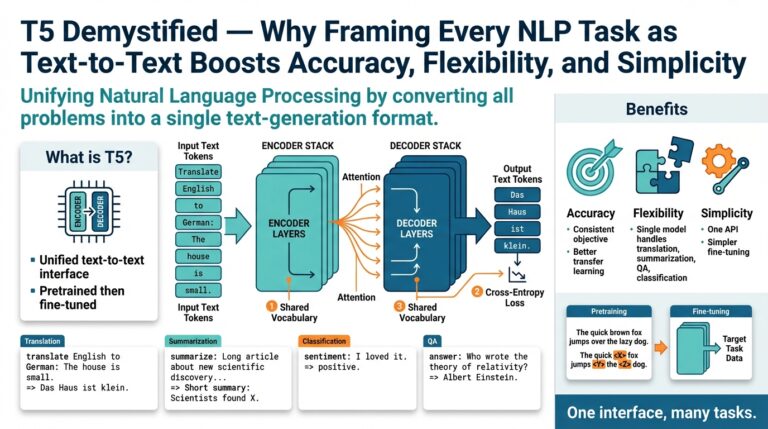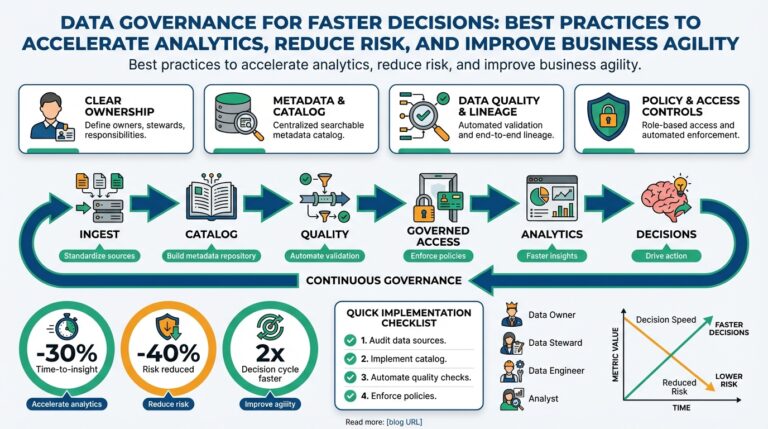Introduction to Text Chunking and Its Importance
Imagine handling a massive document, a long email thread, or the entire contents of a book—how do data professionals and natural language processing (NLP) enthusiasts make sense of all that text? Here’s where text chunking steps in as a powerful toolkit. Text chunking, also known as text segmentation or text splitting, is the process of dividing a large piece of text into smaller, more manageable sections called “chunks.” These chunks can be sentences, paragraphs, or customized segments designed to fit downstream processing needs.
Why is text chunking so important? In NLP, tasks like information retrieval, question answering, summarization, and machine learning pipelines often require processing input text within certain limits. For example, popular transformer models such as BERT or GPT have strict token limits (research from Google AI discusses this). If you feed too much text at once, these models either fail or produce poor results. By chunking text efficiently, you ensure each segment fits model requirements, helping maintain high accuracy across the full dataset.
Chunking is not just about breaking up sentences at random. It’s strategically splitting text to preserve meaningful content and context. For instance, chunking by sentence is ideal for document classification, while longer, overlapping chunks work best for building context-aware search indexes. This process is vital in:
- Document summarization: Summarizing lengthy articles by processing them in manageable parts (ScienceDirect overview).
- Information Extraction: Extracting key data entities and relationships from structured blocks (Stanford NLP Guide).
- Search & Retrieval Systems: Improving the relevance of retrieved results by indexing and searching chunked sections separately (Wikipedia: Text Segmentation).
- Conversational AI: Maintaining a running context and memory in chatbots and assistants by processing conversations in logical pieces.
As you explore text chunking for your project, think about what size, structure, and overlap your chunks should have based on your goals. For instance, chunking news articles into paragraphs keeps topics coherent, while chunking code documentation line-by-line facilitates detailed analysis or translation.
The process can be as simple as splitting on sentences using libraries like spaCy (spaCy sentence boundary detection) or as sophisticated as semantic-based splitting, where AI determines where to break content to preserve meaning (ACL Publications on Semantic Chunking).
By mastering text chunking, you’ll be equipped to handle any text processing challenge, ensuring that your analysis is efficient, your models are accurate, and your pipelines are robust—no matter how long the document.
Essential Python Libraries for Text Chunking
The foundation of effective text chunking lies in leveraging powerful Python libraries specifically designed for text processing and manipulation. With Python’s vibrant ecosystem, several tools stand out for their ability to facilitate chunking tasks ranging from simple splitting to sophisticated natural language processing. Below, we delve into the most essential libraries and how they can empower your chunking projects.
1. NLTK (Natural Language Toolkit)
The Natural Language Toolkit (NLTK) is a mainstay of Python NLP development, providing robust tokenization and chunking capabilities. It allows you to break down paragraphs into sentences, sentences into words, and even identify grammatical phrases, which are crucial for chunking:
- Install with:
pip install nltk - Tokenize text using
nltk.sent_tokenize()andnltk.word_tokenize() - Chunk phrases with built-in regular expression-based chunkers
- Access annotated corpora for training custom chunkers
Example:
import nltk
nltk.download('punkt')
sentences = nltk.sent_tokenize(text)
words = nltk.word_tokenize(sentences[0])
2. spaCy
spaCy is renowned for its industrial-strength NLP pipelines. It provides efficient and accurate methods for tokenization and chunking, especially for phrase extraction and entity recognition:
- Install with:
pip install spacy - Process text and extract
noun_chunkswith minimal code - Benefit from fast, pretrained models for more than a dozen languages
- Ideal for large-scale text chunking in production environments
Example:
import spacy
nlp = spacy.load('en_core_web_sm')
doc = nlp("Python is awesome for chunking text.")
for chunk in doc.noun_chunks:
print(chunk.text)
3. TextBlob
TextBlob offers a simplified interface, making it perfect for beginners who want to segment and chunk text easily:
- Install with:
pip install textblob - Intuitive methods for sentence and word segmentation
- Use
noun_phrasesandsentencesattributes directly - Integrates seamlessly with other NLP workflows
Example:
from textblob import TextBlob
blob = TextBlob("Here is a simple sentence. Text chunking is easy!")
chunks = blob.sentences
for sent in chunks:
print(sent)
4. Transformers (Hugging Face)
Transformers by Hugging Face brings state-of-the-art NLP to Python, allowing for context-aware chunking using deep learning models:
- Install with:
pip install transformers - Leverage models like BERT for context-based chunking tasks
- Customizable tokenizers to split and segment text beyond traditional rules
- Supports transfer learning for entity and phrase chunking
5. Gensim
Gensim is designed for topic modeling and large-scale text processing. While primarily known for extracting topics, its Utils module is ideal for splitting documents for further chunking:
- Install with:
pip install gensim - Leverage
simple_preprocess()for basic chunking and sentence splitting - Efficient for streaming and processing massive text corpora
Additional Tools Worth Exploring
- Regex (re module): The built-in Python re module can be customized to create rule-based chunkers for specialized needs.
- Scikit-learn: While primarily a machine learning library, scikit-learn offers text vectorization and splitting utilities that support data preparation for chunking.
- Pandas: Essential for managing and chunking textual data in DataFrames; particularly useful for batch processing of large datasets. Check official documentation for details.
Incorporating these libraries into your workflow provides a toolkit robust enough to handle everything from line-based splitting to linguistically informed phrase extraction. For a deeper dive into natural language processing methods, the Stanford NLP book is an exceptional academic resource. Mastering these tools will help you unlock powerful text chunking pipelines suitable for any NLP project.
Classic Methods for Text Chunking: Fixed-Size and Overlapping Windows
Chunking text into smaller, manageable parts is essential for many natural language processing (NLP) applications, from search engine indexing to summarization and machine learning. Two of the most foundational and effective approaches are fixed-size chunking and overlapping windowing. Let’s break down these classic methods, illuminate their pros and cons, and provide Python examples for implementation.
Fixed-Size Windows: Simplicity and Speed
Fixed-size windowing is the process of dividing the text into chunks of a specific, consistent length, typically measured in characters, words, or sentences. This approach is prized for its simplicity and performance, making it a staple technique in the machine learning and NLP workflows.
- How it works: The input text is split into consecutive, non-overlapping windows. If the text’s length isn’t perfectly divisible by the chunk size, the last chunk may be shorter.
- Use cases: Useful for creating inputs for machine learning models, preprocessing large corpora, and situations where each chunk should be wholly independent, such as parallel processing tasks.
Python Example (Word-based Fixed-Size Windows):
def chunk_text_fixed_size(text, window_size=100):
words = text.split()
return [' '.join(words[i:i + window_size]) for i in range(0, len(words), window_size)]
sample_text = "This is an example text that will be split into chunks ..."
chunks = chunk_text_fixed_size(sample_text, window_size=10)
print(chunks)While straightforward, this method may split sentences or semantic units awkwardly. For enhanced accuracy, chunking by sentences—using a library such as spaCy or NLTK’s sentence tokenizer—can be preferable, especially when handling narrative text.
Overlapping Windows: Preserving Context
For advanced applications such as language modeling and information retrieval, it’s crucial to maintain some context between adjacent chunks. Overlapping window chunking solves this by allowing each chunk to share a certain number of elements (words, tokens, or sentences) with its neighbors.
- How it works: Define the step (stride) and window length. Each windowed segment starts some distance after the previous one, and the overlap is the difference between the window size and stride.
- Benefits: Minimizes the risk of losing important information at chunk boundaries. Particularly useful for tasks like document classification or context-aware NLP models.
Python Example (Overlapping, Word-Based):
def chunk_text_overlapping(text, window_size=100, stride=50):
words = text.split()
return [' '.join(words[i:i + window_size]) for i in range(0, len(words) - window_size + 1, stride)]
sample_text = "This is an example text that will be split with overlap ..."
chunks = chunk_text_overlapping(sample_text, window_size=10, stride=5)
print(chunks)Overlapping chunking boosts model accuracy and comprehension, which is why it’s featured in influential frameworks like Hugging Face Transformers. However, it can increase memory and computation requirements, so choose your chunking method based on the task’s demands.
Mastering these classic chunking techniques forms a solid foundation for text preprocessing and downstream NLP tasks. For more depth on chunking strategy selection, check out resources from the NLP Specialization by DeepLearning.AI.
Semantic Chunking with NLP: Sentences and Paragraphs
Semantic chunking with NLP allows us to break down texts according to their linguistic and conceptual boundaries—think sentences and paragraphs—rather than just splitting by fixed character count or tokens. This type of chunking preserves the meaning and context within each segment, making it invaluable for downstream applications such as summarization, translation, or question answering. Let’s dive into the practical aspects of semantic chunking, along with detailed Python examples to illustrate the concepts.
Why Semantic Chunking?
Traditional text chunking methods may cut through sentences or paragraphs, disrupting the semantic flow and potentially reducing comprehension or model performance in many NLP tasks. By chunking at sentence or paragraph boundaries, you ensure each chunk remains logically and contextually coherent. This results in more accurate language modeling and better information retrieval.
Chunking Text by Sentences
Natural Language Processing libraries like NLTK and spaCy offer robust tools for sentence segmentation, analyzing the grammatical structure and punctuation to reliably detect sentence boundaries even in complex or noisy text.
Example using NLTK:
import nltk
nltk.download('punkt')
from nltk.tokenize import sent_tokenize
text = "Artificial intelligence is transforming industries. It enables amazing applications. But, it also raises ethical questions."
sentences = sent_tokenize(text)
print(sentences)
This script uses sent_tokenize to split the text into sentences. You can now process these semantic chunks individually while retaining their linguistic integrity.
Dividing Text by Paragraphs
Paragraph chunking is particularly valuable for longer documents where each paragraph might address a distinct topic or subtheme. The simplest method is splitting by newline patterns, but more sophisticated heuristics can detect paragraphs even if spacing is inconsistent.
Basic Paragraph Segmentation:
def paragraph_tokenize(text):
paragraphs = [p.strip() for p in text.split('\n') if p.strip()]
return paragraphs
long_text = """
Artificial intelligence is transforming industries.
It enables amazing applications.
But, it also raises ethical questions.
"""
paragraphs = paragraph_tokenize(long_text)
print(paragraphs)
For more robust solutions, libraries like Hugging Face Datasets offer utilities for document segmentation and processing, handling edge cases found in real-world data.
Best Practices in Semantic Chunking
- Preserve Coherence: Always chunk on semantic boundaries for tasks like summarization or translation, where context matters.
- Handle Edge Cases: Use NLP libraries that are trained on diverse corpora to recognize abbreviations, quotations, or non-standard punctuation (spaCy’s pipeline is especially strong here).
- Combine with Other Techniques: If your semantic chunks are still too long for your application, apply further token-based or character-based splitting only after sentence or paragraph segmentation.
For a deeper dive into sentence and paragraph segmentation and their impacts on NLP applications, check out Stanford’s CS224n course materials, which discuss linguistic structures in NLP systems.
Semantic chunking is more than a technical convenience—done right, it improves the accuracy and reliability of modern language models, making your NLP solutions smarter and more user-friendly.
Advanced Chunking: Tokenization and Sliding Window Techniques
When working with large bodies of text, text chunking becomes essential in numerous applications, such as Natural Language Processing (NLP), document summarization, and information retrieval. Two of the most impactful chunking strategies in the modern toolkit are advanced tokenization and sliding window techniques. Let’s delve into these concepts, exploring their mechanics, use cases, and concrete Python examples for mastering text segmentation at scale.
Advanced Tokenization: Beyond Simple Splitting
Tokenization is the process of splitting text into smaller units, often words, subwords, or sentences. While basic tokenization can be achieved with a simple .split() on spaces or punctuation, advanced tokenization leverages language-specific rules and NLP libraries to respect the nuances of different languages and contexts. This level of precision can significantly impact downstream tasks like named entity recognition or sentiment analysis.
Why is advanced tokenization important?
- Handles ambiguities: Distinguishes between abbreviations (e.g., “U.S.A.”), contractions, and sentence boundaries.
- Language-aware: Adapts to non-space-delimited languages (e.g., Chinese, Japanese) or those with complex morphology.
- Optimized for models: Prepares text as required by BERT, GPT, and other transformer models, which rely on subword tokenizers.
Try it with Python:
from transformers import BertTokenizer
text = "Dr. Smith's research at U.C.L.A. in L.A. is groundbreaking."
tokenizer = BertTokenizer.from_pretrained('bert-base-uncased')
tokens = tokenizer.tokenize(text)
print(tokens)
This BERT tokenizer uses WordPiece tokenization, which is industry-standard for high-performance NLP. For further exploration, see the Natural Language Toolkit (NLTK) and spaCy for robust, language-aware tokenizers.
Sliding Window Techniques: Seamless Overlapping Segments
Sliding window chunking is crucial when you want to process large texts while maintaining context between segments. Unlike fixed-length chunking that cuts text at rigid intervals, sliding window methods generate overlapping chunks, ensuring important content isn’t lost between boundaries. This is particularly useful in language models, where context continuity greatly enhances understanding and predictions.
- Determine Window Size and Stride:
- Window size: Number of tokens (or sentences) per chunk.
- Stride: Number of tokens to move the window for each new chunk. Choosing a stride smaller than the window size generates overlapping regions.
- Chunk the Text:
In Python, you can implement sliding window chunking with a simple loop. Here’s how to break text into word-level chunks:
def sliding_window(text, window_size=50, stride=25): words = text.split() for i in range(0, len(words), stride): yield ' '.join(words[i:i + window_size]) if i + window_size >= len(words): break chunks = list(sliding_window(large_document, window_size=50, stride=25)) - Why use sliding window?
- Preserves context at boundaries – maintaining essential information for downstream tasks like QA or summarization.
- Enables large-text processing even when working with models that have input length limitations, such as Transformer-based architectures (typically 512 or 1024 tokens).
- Improves information retrieval: Maximizes recall when searching for relevant content within long documents by assuring all parts are examined with context continuity.
For a deeper dive into this approach, see the seminal work on extractive summarization with sliding windows from the Association for Computational Linguistics.
Incorporating advanced tokenization and sliding window techniques into your text processing pipeline allows you to maximize the fidelity and utility of the segmented text, regardless of scale or application.
Custom Chunking Strategies for Real-World Applications
When working with text data in real-world applications, a single chunking approach rarely fits all scenarios. Custom chunking strategies can unlock deeper insights, improve downstream model performance, and address specialized tasks such as legal document processing, financial text analysis, or healthcare data extraction. Let’s explore how you can craft custom chunking solutions to suit different contexts, complete with practical examples and guidance.
1. Chunking by Delimiters and Section Headers
Documents often contain inherent structure—like chapters, headings, or bullet points—that segment content naturally. Custom chunkers can identify and split text on these features, respecting domain-specific formatting.
- Step 1: Define a list of keyword delimiters (e.g., “Chapter”, “Section”, “Conclusion”).
- Step 2: Use regular expressions to split the text whenever these keywords appear.
- Step 3: Post-process to merge small or irrelevant chunks, ensuring meaningful boundaries.
Example Python snippet:
import re
def chunk_by_headers(text):
pattern = r"(?i)(Chapter|Section|Conclusion)\\s\\d+:?"
chunks = re.split(pattern, text)
return [chunk.strip() for chunk in chunks if chunk.strip()]
This method is invaluable in compliance-driven industries. For more on structuring natural language data, see Association for Computational Linguistics: Text Segmentation.
2. Semantic Chunking with Embeddings
For nuanced tasks, chunking based on meaning—rather than just word count or sentences—can create more coherent data groups. Tools like sentence transformers or spaCy help you partition text by topic shifts and semantic similarity.
- Step 1: Embed sentences using a pre-trained model (Sentence-BERT).
- Step 2: Compute similarity between adjacent sentence embeddings.
- Step 3: Insert a chunk boundary if the similarity falls below a chosen threshold.
Example code:
from sentence_transformers import SentenceTransformer, util
model = SentenceTransformer('all-MiniLM-L6-v2')
sentences = text.split('.')
embeddings = model.encode(sentences)
chunks = []
current_chunk = [sentences[0]]
for i in range(1, len(sentences)):
sim = util.pytorch_cos_sim(embeddings[i-1], embeddings[i])[0][0]
if sim < 0.7:
chunks.append(' '.join(current_chunk))
current_chunk = []
current_chunk.append(sentences[i])
if current_chunk:
chunks.append(' '.join(current_chunk))
This approach is especially useful in topic modeling and qualitative research, explained further at Towards Data Science: Topic Segmentation with BERT.
3. Rule-Based Chunking for Structured Data Extraction
Highly regulated domains like healthcare or legal tech often require rules that account for custom patterns—such as extracting patient records or legal clauses. Hybrid, rule-based chunkers can be tailored using domain ontologies or regular expressions to ensure accuracy.
- Step 1: Identify domain-specific cues (e.g., “Diagnosis:”, “Prescription:”, “Patient Name:”).
- Step 2: Develop regular expressions for each.
- Step 3: Iterate through the document, starting and ending chunks based on matched cues.
Example chunker for extracting medical sections:
import re
def chunk_by_medical_sections(text):
pattern = r"(Diagnosis:|Prescription:|Patient Name:)"
matches = list(re.finditer(pattern, text))
chunks = []
for i, match in enumerate(matches):
start = match.start()
end = matches[i+1].start() if i+1 < len(matches) else len(text)
chunks.append(text[start:end].strip())
return chunks
This process is central to clinical text mining, as discussed in this NCBI review on clinical NLP.
4. Dynamic Chunking for Large-Scale and Streaming Text
Real-time applications—like chatbots, voice assistants, or live comment monitoring—demand adaptive chunking strategies that handle new data as it arrives. Buffering techniques and sliding windows enable continuous, contextually aware chunking.
- Step 1: Define window size and acceptable overlap.
- Step 2: Maintain a rolling buffer of incoming text.
- Step 3: Emit a new chunk if buffer exceeds window or a logical boundary (e.g., paragraph end).
Sample implementation:
def streaming_chunker(text_stream, window_size=100):
buffer = ''
for text in text_stream:
buffer += text
if len(buffer) > window_size:
boundary = buffer.rfind('.')
yield buffer[:boundary+1]
buffer = buffer[boundary+1:]
This real-time processing method is elaborated in Elsevier: Sliding Window Algorithms.
By combining classic and cutting-edge techniques, you can create chunking pipelines adaptable to your project’s unique challenges, streamlining everything from information retrieval to large language model integration. Further reading on specialized chunking methods can be found at NLTK’s official chunking guide.
Bonus Tools: Visualization and Debugging Methods
Interactive Visualization Tools for Text Chunking
Visualization is crucial for understanding how your text chunking method parses and segments text. By making chunk boundaries and token groups visible, you can catch errors, interpret results, and optimize your approach. There are several Python-friendly visualization libraries to help you see chunked data in action:
- SpaCy Displacy: SpaCy’s built-in visualizer allows you to render syntactic dependencies and custom spans in the browser. To visualize text chunks, simply package your tokens or spans, then run
spacy.displacy.render(). This is especially helpful for those using rule-based or NLP-driven chunking methods. Example usage is available in the SpaCy documentation. - Matplotlib and Seaborn: For more quantitative chunking analysis—such as chunk length distribution or chunk overlap—you can leverage data visualization libraries like Matplotlib or Seaborn. You might, for example, use bar charts to depict the frequency of chunk lengths, or violin plots to compare chunk distributions. Here’s a simple example:
import matplotlib.pyplot as plt chunk_lengths = [len(chunk) for chunk in chunks] plt.hist(chunk_lengths, bins=20) plt.title('Text Chunk Length Distribution') plt.xlabel('Chunk Length') plt.ylabel('Frequency') plt.show() - Bracketed Text Display: A custom but powerful approach involves displaying the original text with chunk boundaries visually highlighted. This can be done by inserting bracketed notations around chunks:
"[This is chunk one] [and this is chunk two]."
This simple method helps when debugging text chunks directly in Python outputs or even in Jupyter notebooks.
Debugging Chunking Logic with Logging and Unit Testing
Effective debugging helps you optimize chunking algorithms and catch edge cases. Here’s how you can build robust debugging mechanisms:
- Python Logging: Use Python’s logging module to trace chunk creation. You can log chunk indices, boundaries, and sample outputs at each major step:
import logging logging.basicConfig(level=logging.INFO) for i, chunk in enumerate(chunks): logging.info(f"Chunk {i}: {chunk}")Logging is flexible—you can route output to files for later analysis or visualize logs with external tools.
- Unit Tests: Create unit tests to verify chunking correctness under various assumptions (e.g., chunks never overlap, each covers at least N characters, special tokens are handled gracefully). Example:
import unittest class TestChunking(unittest.TestCase): def test_no_overlap(self): # Add custom logic for overlap check self.assertTrue(no_chunk_overlap(chunks))See the Real Python guide to testing for best practices.
- Comparing Output Against Gold Standards: Where available, compare your chunked data with annotated datasets (commonly used in NLP). For more on building and using gold standards, check out this Stanford NLP resource on sequence labeling.
Integrating Visualization and Debugging in Your Workflow
The best results come from iterative development: visualize, debug, and refine your chunking pipeline. Consider using Jupyter notebooks to combine live code, visualization, and narrative in the same document for interactive exploration—see Jupyter.org for setup and tips.
By routinely visualizing and scrutinizing your results, you save time, boost accuracy, and gain deeper intuition for your chosen text chunking methods. These practices turn a simple script into a robust, production-ready toolkit.



